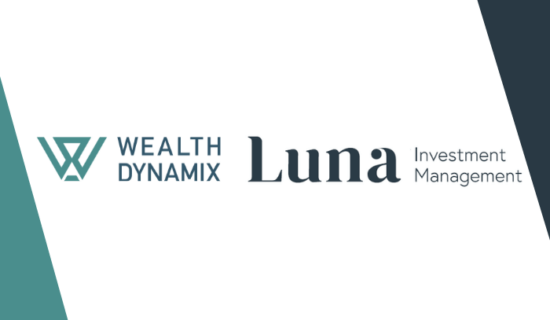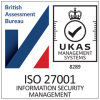At the recent Hubbis Digital Wealth Forum, Darell Miller shared his views on how private banks and other wealth firms can drive towards scale without suffering the growth pains so often associated with the rapid expansion of coverage. He explained why breaking the chain between revenue and costs is crucial for any wealth industry competitor wanting to achieve both scale and profitability. He outlined how to break free of the chains that so often prevent relationship managers (RMs) from serving their clients productively, with personalisation and profitably.
After briefly introducing Wealth Dynamix, Darell pointed to a slide that harks back to Jane Austen pronouncing: “It is a truth universally acknowledged that wealth managers, who want to be in possession of a great fortune, cannot grow their revenues and costs at the same time; the profitability ratio needs to scale and the link between growing revenue and costs has to be broken.”
He cited research from various leading sources such as EY, Deloitte and Capgemini that support Wealth Dynamix’s own findings that the main challenges clients and prospects talk about are threefold – profitability at scale, cost transformation, and client centricity.
The wealth business model
Darell explained that in a manufacturing business model as manufacturing increases, costs tend to rise in ‘lock step’ with revenues. But he observed that the data business model (such as that championed by Bloomberg, Refinitiv and others) has high fixed costs to produce data and provide services to begin with, but once profitable usually become profit-generating machines. “They can have dramatic profit increases because they can sell the same piece of data infinite times over with only a small increase in costs and commissions.”
However, he also reported that, unfortunately, most wealth firms have the worst of both worlds. They have high fixed costs in the form of RMs, compliance, IT and systems, advisors, and other expensive talent. The challenge for wealth managers and private banks is how to transform their business model into more of data business, to ‘break the chain’ between rising revenues and costs so that they can have their cake and eat it too.
The big brands are coming to eat your cake
He referred to a recent Economist article arguing that wealth management is the place to be in financial services in the coming days. “But the bad news is the global giants are gunning for you, wanting to dominate this business and investing massively in technology to do exactly that,” he said. “So, to fight back and win, you need to scale without pain.”
He said the growth potential is most certainly there in Asia, with a doubling of AUM levels targeted between 2012 and 2026. But he also noted that according to Accenture, 80% of RMs and advisors in Asia believe a one-stop solution platform would allow them to be more efficient and provide clients with a better service.
Seeing the connections, building for the future
Additionally, he reported that a surprising large percentage of affluent Asian clients are expected to switch RM, while according to Standard Chartered, more than 60% of investors in the 18- to 35-year-old bracket are more likely to use a RM compared to the previous generations.
“These younger generations are not necessarily only wanting digital, they also want the RM service, and that means they want both, in other words, a combination of technology-enhanced RM and an optimised digital experience. And remember that these younger generations are set to inherit nearly USD2 trillion in Asia by 2030 and are also making new private wealth themselves,”
Darell Miller, Managing Director APAC
Breaking the negative linkages
For a wealth management firm, this is why the key issue is the link between a greater number of clients and a corresponding higher cost to serve, Darell reiterated. “Only when the link is broken can firms hope to scale profitably.”
He then ran through some of those core costs to serve, including client acquisition and onboarding costs, sourcing prospects and screening them, nurturing and winning them, collecting data on them and then prioritising prospects intelligently. Then there are the Front Office staffing costs, centralised staffing costs, IT costs and all the other fixed costs.
Building from the top down
Factoring in the concept that 80% of revenues come from the top 20% of RMs and a relatively tight group of leading clients, Darell reported that to truly scale a wealth business requires an orchestration platform. “The orchestration platform we deliver allows for visibility of your top RMs and the results prove that Wealth Dynamix clients can end up serving clients at around a third of the cost of traditional processes, and in some cases as little as a sixth of the cost,” he stated.
And the simultaneous mission, he added, is to see the best practices and results of those leading RMs mirrored across the other 80% of the RMs. “If you can do that, you end up scaling your AUM and you scale your service,” he said, “but without scaling up your costs anywhere near the same degree. That is having your cake and eating it in wealth management.”
Service counts big
He drew his talk towards a close noting that research shows that Asian clients want advisory services, and those that are content with the advisory services of their primary wealth management firm vest some 60% of their AUM with those primary providers, and only 29% with the secondary firm, and next to nothing with anyone else. “This means it is effectively a winner that takes nearly all business today, so you need to give clients the best service,” he reported.
Intimacy, relevance and perception
He explained that this service comprises three core elements, according to research from Deloitte. Intimacy is built through long-term relationships as well as frequent and empathetic engagement. Relevance is solidified by solving their key needs in a timely and effective way, even when those needs stretch beyond traditional expectations and offerings. Thirdly, perceptiveness is demonstrated by the identification of clients’ evolving needs and solution options, both explicit and implicit.
He closed by reminding the guests that the hybrid model of outstanding digital solutions and technology support aligned with technology-enhanced and process-empowered RMs, and advisors was a very tasty recipe. “That is what I mean by having your cake and eating it – growing your business, winning the service battle but not significantly scaling up costs at the same time, all of which results in growth and surging profitability.”
Are you seeking to create an extraordinary digital-first client prospecting, onboarding, and servicing experience for your wealth management firm?
If you would like to learn about how we can assist, please don’t hesitate to get in touch.





